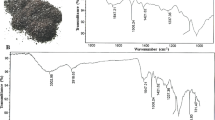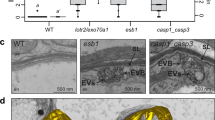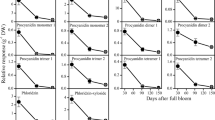Abstract
THE vacuoles of higher plant cells are known to be sites of deposition of salts and metabolites. A role as the lytic compartment has also been proposed1, and Matile has argued that the vacuole participates in the metabolism of higher plant cells in the same way that lysosomes do in other organisms. Recently, isolation methods have been developed which allow a direct analysis of vacuolar constituents and we have shown previously that the vacuoles isolated from the endosperm of young castor bean seedlings contain at least 25% of the cellular protein, 62% of the sucrose and various hydrolytic enzymes (acid protease, carboxypeptidase, phosphodiesterase, RNAase, phytase and β-glucosidase) in amounts indicating a primarily (possibly exclusive) vacuolar localisation2. In this tissue it is known that when the dry seed imbibes water the outer, water-soluble matrix of the protein bodies is dissolved and small vacuoles containing the protein crystalloid are formed. These coalesce early in germination to form the large central vacuole, and the remnants of the protein bodies disappear within a few days as growth proceeds3. We have examined vacuoles isolated from the endosperm of 4-d-old seedlings, when it is known that a net loss of protein is occurring. Here we compare the protein composition of the vacuoles with that of the original protein bodies, and show that hydrolysis of the endogenous protein continues in the isolated vacuoles which are free from other cellular components.
This is a preview of subscription content, access via your institution
Access options
Subscribe to this journal
Receive 51 print issues and online access
$199.00 per year
only $3.90 per issue
Buy this article
- Purchase on Springer Link
- Instant access to full article PDF
Prices may be subject to local taxes which are calculated during checkout
Similar content being viewed by others
References
Matile, P. A. Rev. Pl. Physiol. 29, 193–213 (1978).
Nishimura, M. & Beevers, H. Pl. Physiol. 62, 44–48 (1978).
Tully, R. E. thesis, Univ. California (1976).
Yatsu, L. Y. & Jacks, T. J. Archs Biochem. Biophys. 124, 466–471 (1968).
Tully, R. E. & Beevers, H. Pl. Physiol. 58, 710–716 (1976).
Rosen, H. Archs Biochem. Biophys. 67, 10–15 (1957).
Lowry, O. H., Rosebrough, N. J., Farr, A. L. & Randall, R. J. J. biol. Chem. 193, 265–275 (1951).
Author information
Authors and Affiliations
Rights and permissions
About this article
Cite this article
NISHIMURA, M., BEEVERS, H. Hydrolysis of protein in vacuoles isolated from higher plant tissue. Nature 277, 412–413 (1979). https://doi.org/10.1038/277412a0
Received:
Accepted:
Issue Date:
DOI: https://doi.org/10.1038/277412a0
This article is cited by
-
A cellular suicide strategy of plants: vacuole-mediated cell death
Apoptosis (2006)
-
Proton pumps of the vacuolar membrane in growing plant cells
Journal of Plant Research (1996)
-
Homologues of a vacuolar processing enzyme that are expressed in different organs in Arabidopsis thaliana
Plant Molecular Biology (1995)
-
Biogenesis of protein bodies by budding from vacuoles in developing pumpkin cotyledons
Protoplasma (1987)
-
A highly selective alkaloid uptake system in vacuoles of higher plants
Planta (1984)
Comments
By submitting a comment you agree to abide by our Terms and Community Guidelines. If you find something abusive or that does not comply with our terms or guidelines please flag it as inappropriate.



